Last updated on October 25, 2023

Collective Brutality | Illustration by Johann Bodin
There’s a joke in Magic design that “everything is kicker,” which alludes to the fact that so many mechanics are just variations of paying extra mana for an added effect.
Today I’m looking at escalate, one of the least unique kicker mechanics out there. I’ll be using my L1 judge knowledge to explain how escalate works, where it came from, and how likely it is to show back up in Magic.
Ready? Let’s kick it up a notch!
How Does Escalate Work?
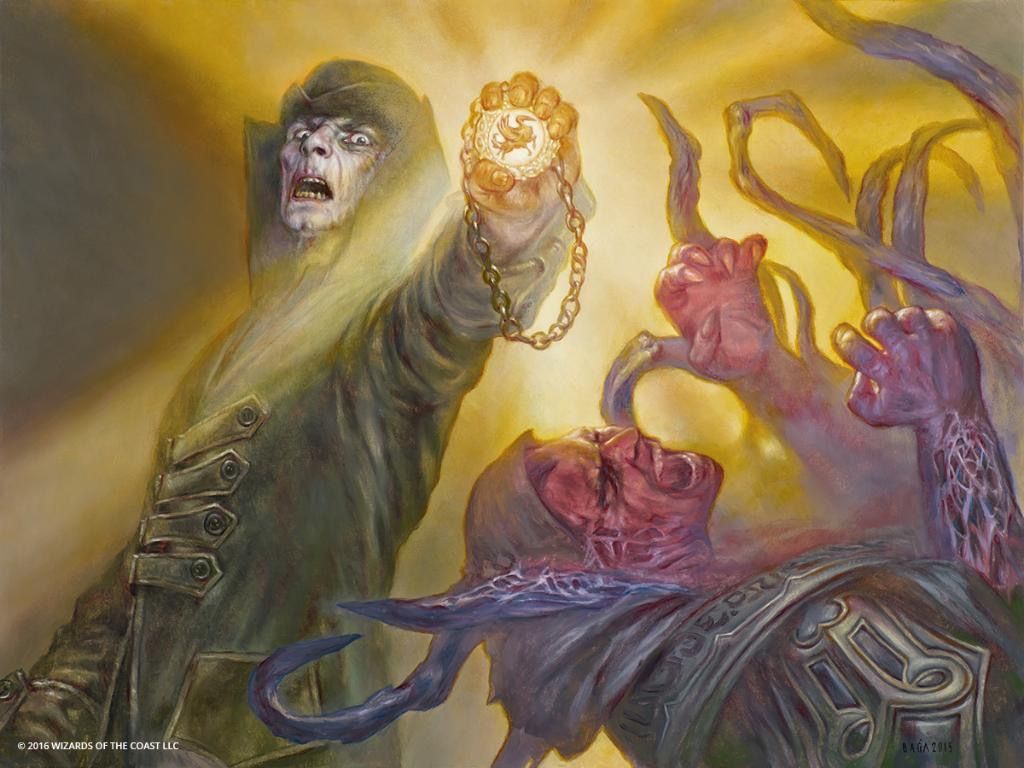
Borrowed Grace | Illustration by Volkan Baga
When you cast a spell with escalate, you choose any number of modes on the card. For each mode chosen beyond the first, you have to pay the additional cost spelled out on the card. In other words, you always get one mode “for free” and pay the escalate cost to tack on extra modes.
The costs associated with escalate vary from paying extra mana to tapping creatures or discarding cards. If you want to choose all three modes for Collective Effort, for example, you need to pay and tap two untapped creatures you control. You can’t “overpay” by tapping more than two creatures this way, and there need to be legal targets for each mode you choose.
When an escalate spell resolves, the modes you chose happen in the order they’re written on the card. The entire spell resolves before players can take any additional actions, so no one can react in between separate modes of an escalate spell once it starts to resolve.
The History of Escalate in MTG
Escalate debuted on eight cards in 2016’s Eldritch Moon. All but one of these cards (Savage Alliance) would later appear in the 2023 digital-only Shadows Over Innistrad Remastered released exclusively for MTG Arena.
From a lore perspective, the mechanic was used to represent the denizens of Innistrad uniting against the Eldrazi menace that had invaded the plane. Escalate has been deemed somewhat forgettable or unnecessary thanks to the existence of the mostly-identical entwine mechanic, and escalate hasn’t been reused outside of its debut set.
Is Escalate an Additional Cost in MTG?
Escalate is indeed an additional cost, one that can be paid multiple times when you cast a spell. It’s similar to how replicate or multikicker work.
Additional costs don’t change the mana value of a spell. A fully escalated Collective Defiance with all three modes costs five mana total, which puts five ember counters on a Smoldering Egg. But that spell wouldn’t be a legal target for Disdainful Stroke since the mana value is still three.
When Can You Pay the Escalate Cost?
Additional costs like escalate can be paid when you cast the spell, regardless of where you cast it from. You choose your modes first when you cast an escalate spell. You pay the additional escalate cost for each mode beyond the first at the same time you pay mana for the spell.
The modes are “locked in” once the costs have been paid and the spell is officially cast, meaning you can’t wait to see what other players do and then tack on additional modes. All modes are selected upfront when you cast the spell.
If another spell or ability instructs you to cast a spell without paying its mana cost, you can still pay the additional escalate costs for that spell. For example, if you use Arcane Proxy’s ETB ability to cast Blessed Alliance from your graveyard, you don’t pay the mana cost on Alliance, but you may pay the escalate cost up to two times to add additional modes.
Gallery and List of Escalate Cards
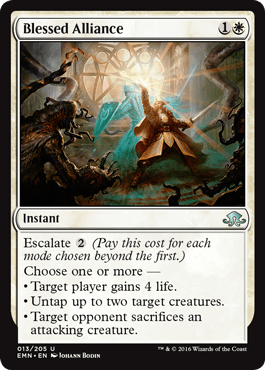

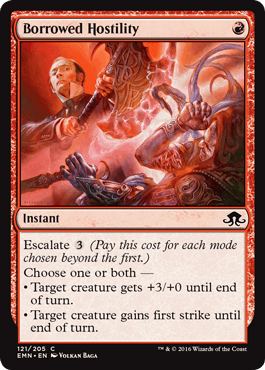
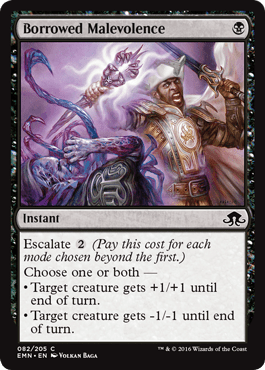


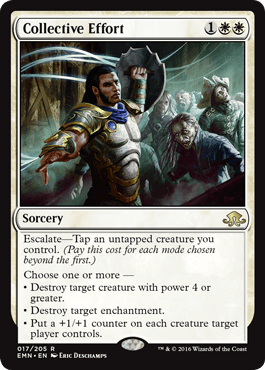
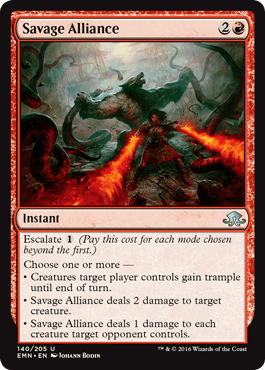
- Blessed Alliance
- Borrowed Grace
- Borrowed Hostility
- Borrowed Malevolence
- Collective Brutality
- Collective Defiance
- Collective Effort
- Savage Alliance
Best Escalate Cards

Collective Brutality is the most noteworthy escalate card from a Constructed standpoint. It provides hand disruption, small creature removal, and lifedrain all in one, with the secret mode of being a discard outlet. It sees occasional Modern play, and even enables reanimator strategies in eternal formats or various Cubes.
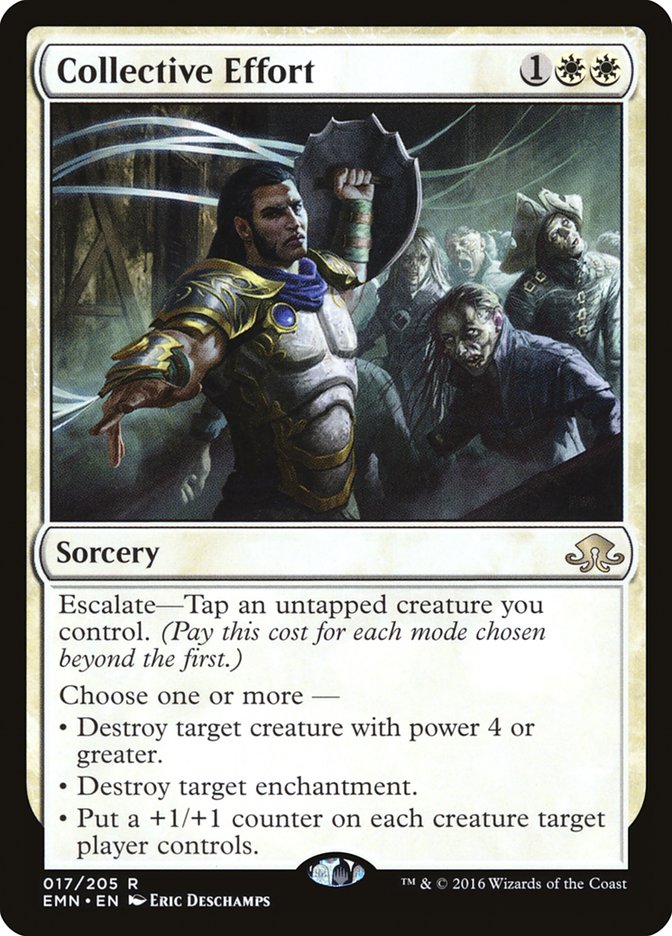
Collective Effort has a home in Commander where it’s important for singular cards to deal with multiple problems at once. Being able to pop an enchantment and a big creature feels great, and you can grow your board while doing so. It’s also a nice tech option for creatures that need to be tapped down like Emmara, Soul of the Accord and Zar Ojanen, Scion of Efrava.
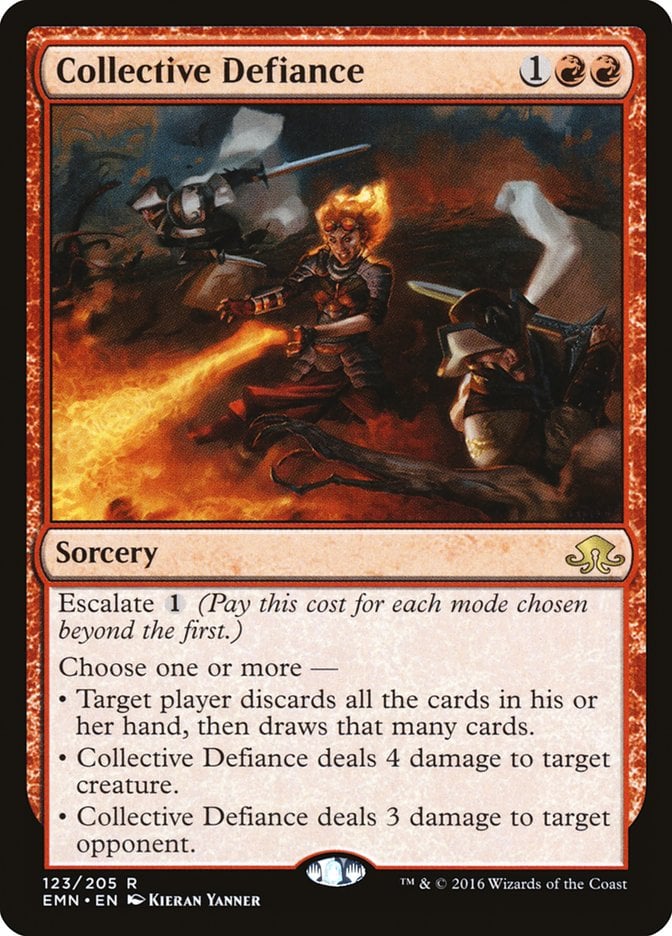
Collective Defiance is the final rare in this mini-cycle, which dropped off significantly after it rotated out of Standard. The card can be effective in decks that care about wheeling their hands, but it’s been largely overshadowed by Mishra's Command.
Blessed Alliance and Savage Alliance aren’t terrible by any stretch, but they aren’t standouts in any particular format aside from Limited.
Well, That Escalated Quickly…
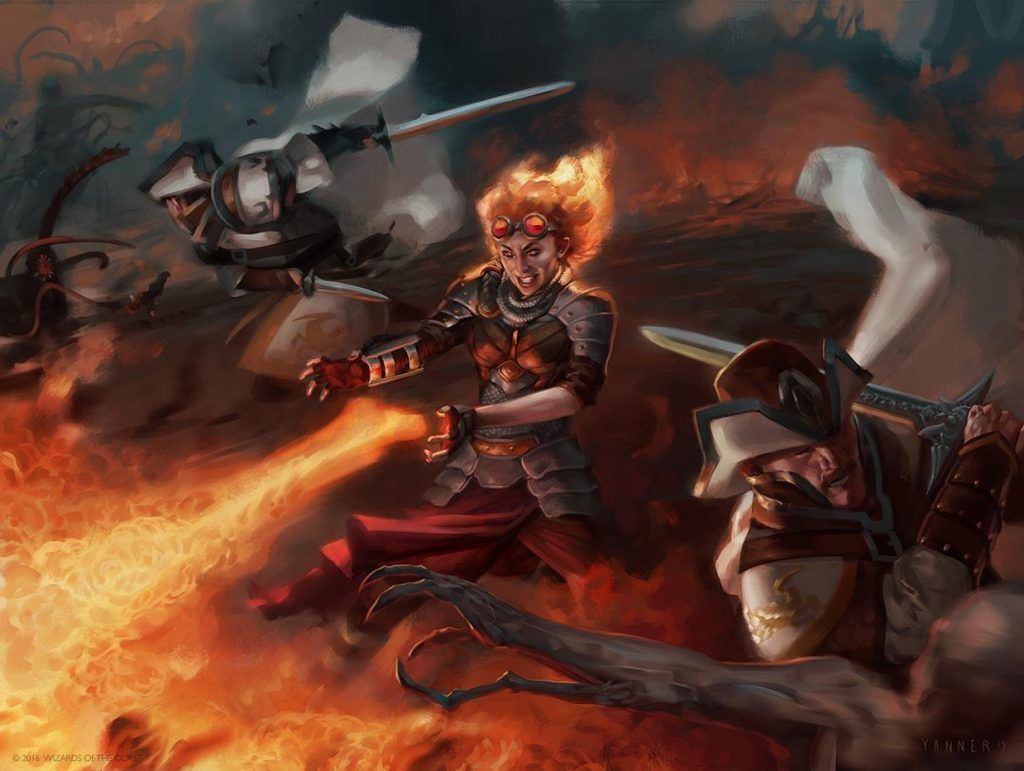
Collective Defiance | Illustration by Kieran Yanner
Escalate’s problem isn’t that it’s bad, but rather that it’s just not interesting or unique. It’s not evocative of anything flavorful happening in-game and is basically a rehashed version of entwine, which in turn is just one of many countless kicker variants.
Entwine has been used multiple times since the release of Eldritch Moon, as recently as Mirage Mockery from All Will Be One’s Commander precons. I’d say that escalate is better suited for spells with more than two modes, but Kaya's Guile set the precedent that entwine works just fine with 3+ modes.
I’m holding out hope that Wizards finds interesting design space to make it mechanically unique from entwine. I could see a world where they design Ravnica-style Charms that allow you to escalate modes, but the design issue will always be how to justify using escalate instead of entwine.
I think it’s highly unlikely for escalate to make a second appearance, but what do you think? Do you enjoy escalate as a mechanic, and do you want to see it again in the future? Let me know in the comments below or over in the Draftsim Discord.
Thank you for making Draftsim your #1 stop for all things Magic!
Follow Draftsim for awesome articles and set updates:

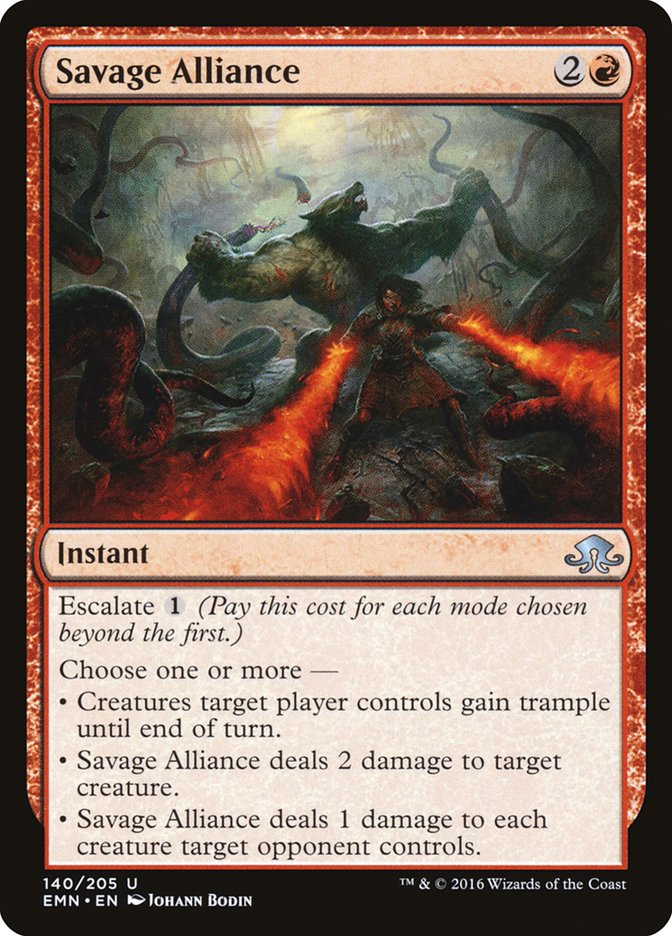
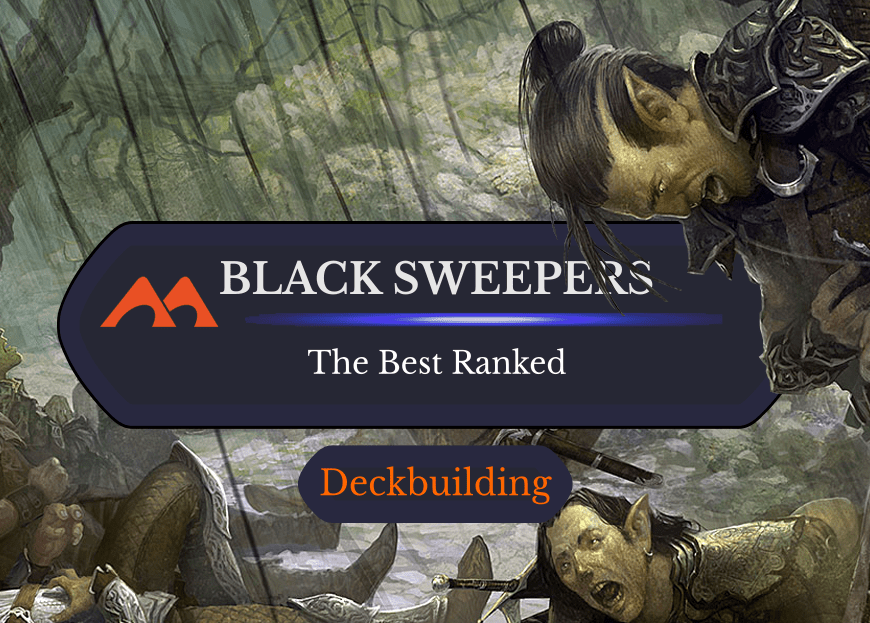
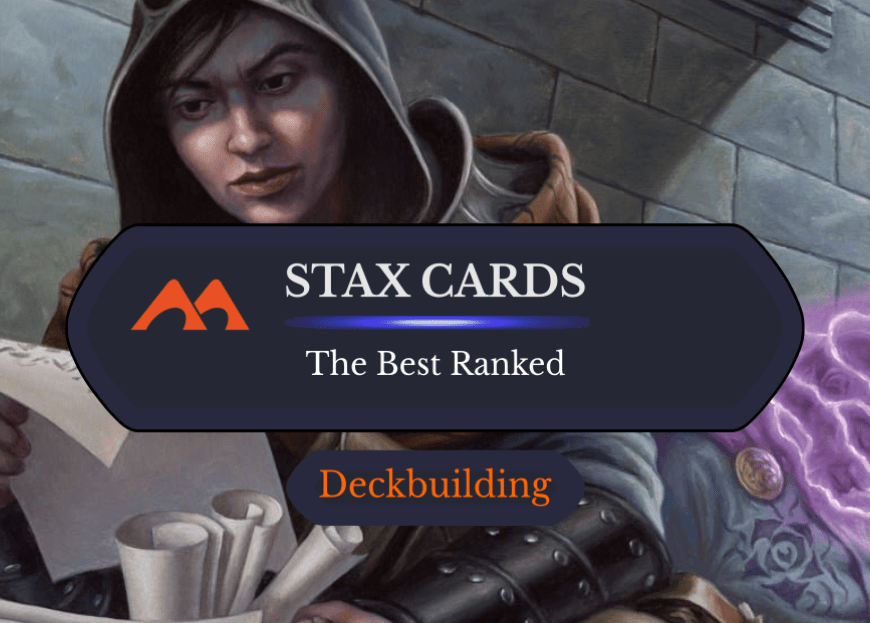
Add Comment